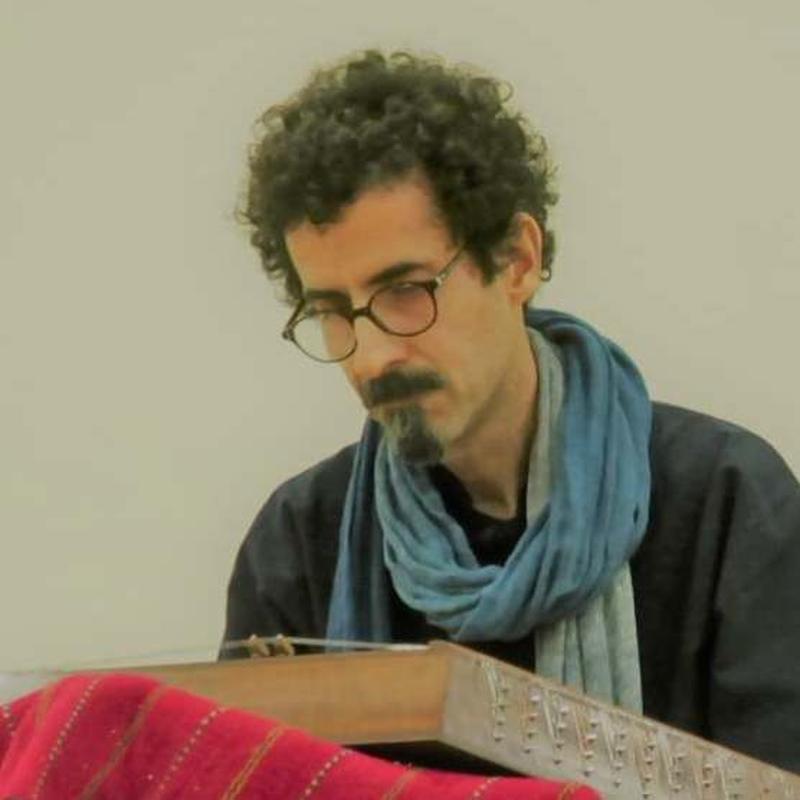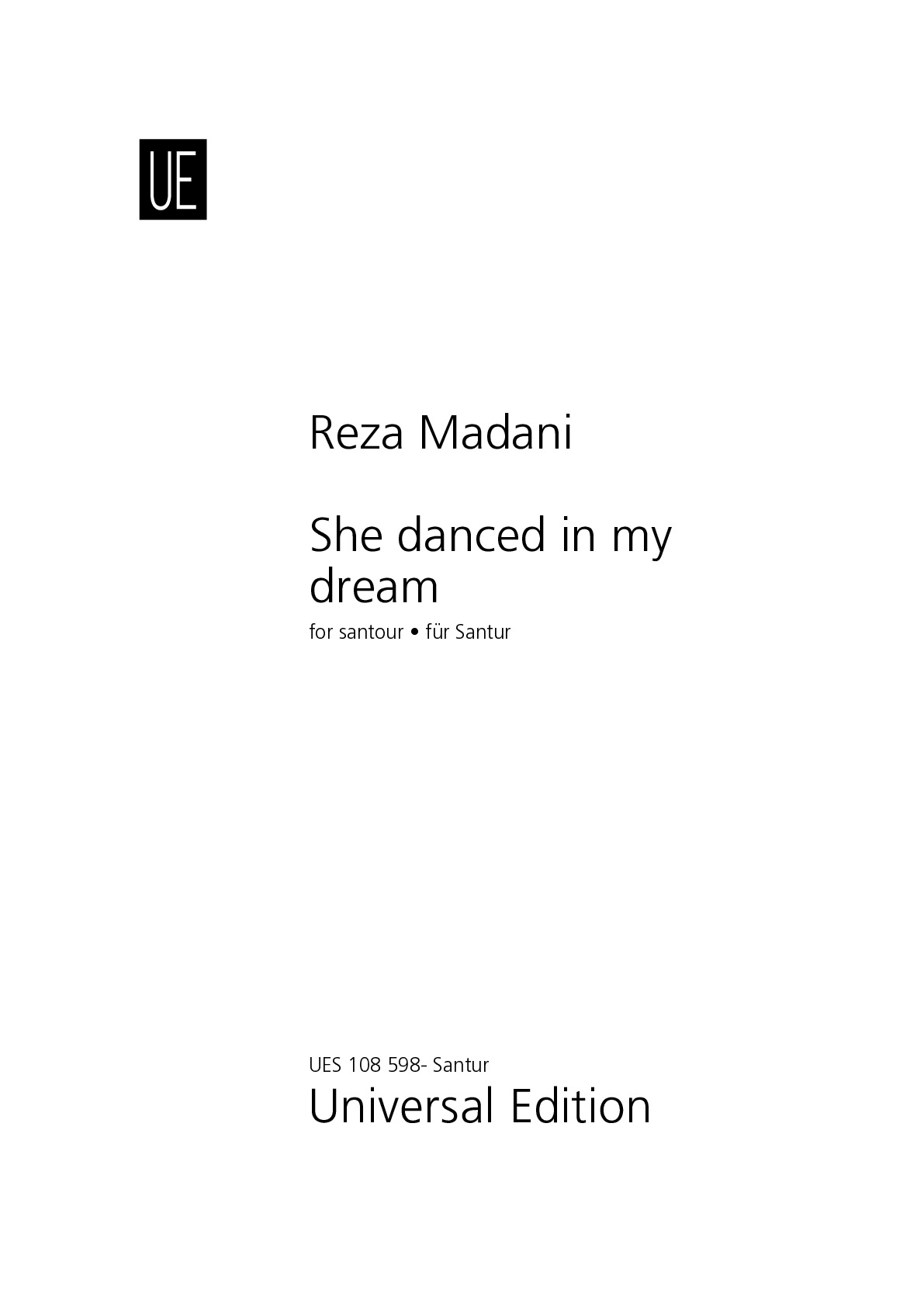

Reza Madani
She danced in my dream
Duration: 7'
Solos:
santur
She danced in my dream
Translation, reprints and more

Reza Madani
She danced in my dreamOrchestration: for santour
Type: Noten
Sample pages
Audio preview
Video
Work introduction
To compose this work, I was inspired by my experience of working for several years with dancers. The audio and video provided are a slightly shortened version of the piece, omitting variations 4 and 5 of the opening section, as well as the bridge in the rhythmic section (see “What is necessary to perform this work” for the presentation of the structure of the piece).
What is necessary to perform this work?
Mode and tonality
This piece is written in the Iranian mode Esfahan in the tonality of C.
Demiflat
A flat note with an arrow on its stem in the key signature or as an accidental indicates a demiflat (called koron in Persian), which lowers the natural note by one quarter tone. On an analog tuner, this corresponds to a pitch halfway between the natural note and its flat note. On a digital tuner, it is the natural note lowered by 50 cents. Some players tune between minus 40 and minus 60 cents, creating subtle variations in the overall feeling conveyed by the piece.
Hammer signs
In Persian, the hammers used to play the santour are called mezrabs. In the music score, hammer signs are indicated by a V for the left-hand mezrab and an n-like shape for the right-hand mezrab.
Tremolos and trills
In santour music, tremolos, called reez in Persian (literally meaning "small"), are very common. They are used both as ornamentation for short notes (indicated by double diagonals on the note's stem) and as a means to sustain long notes (indicated by triple diagonals on the note's stem). Tremolos are executed by rapidly alternating between the left and right mezrabs over the duration of the note, with the number of alternations left to the player's discretion. A special technique, if specified by the composer through the addition of the words Tak reez (or Tak or T for simplification) above or below the tremolo note, involves playing a distinct initial stroke before beginning the alternations, while respecting the note's duration. The Tak technique (meaning “single” in Persian) can also be used in the execution of a trill; in this case, the term Tak trill is indicated on the note.
Section names
Different sections of the piece are marked with Persian labels:
- Goshayesh, ghesmate 1 ta 6: Overture or Opening, parts 1 to 6
- Zarbi: Rhythmic section, including sub-sections A, B, Bridge (see Pol below), C, and D
- Pol (charkheshe rooye paye): Bridge (turning over the base line)
- Foroud: Coda
